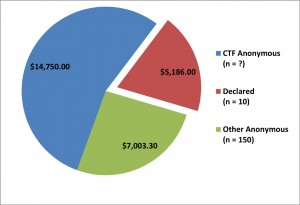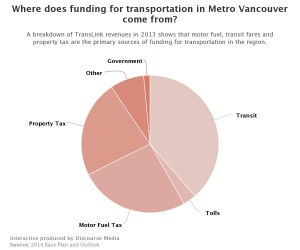I was about to publish my long-delayed blog post on the campaign financial disclosures from the November election, but then saw another declaration was released, and found it so humorously ham-fisted, that I have to write about that first. (I’m massaging some graphs for the other one… will be ready soon)
The Canadian Taxpayers Federation have always been reluctant to talk about where their money comes from, but as the front organization for Federal Conservative datamining the NO side in the ongoing Metro Vancouver Transportation and Transit Plebiscite, they attempted to get some press this week by releasing a declaration of their campaign contributions.
Except, of course, they did no such thing.
Their declaration document, which you can read in its entirety here, is amazingly bereft of details, and suffers from some basic math problems (reinforcing the notion that math is not a CTF strong point).
The document states that the NO campaign has a budget of $27,259.30. That came from anonymous donations amounting to $7,003.30, declared donations from 10 individuals that total $5,186, and $14,750 from the CTF coffers. Those numbers leave an unexplained $320 gap, but that is not the real problem with this “declaration”.
Of the $27,259.30, exactly $5,186 is actually disclosed – less than 20% of the total money they are spending is from a declared source. The largest contribution, the $14K from the CTF itself, will never be declared, nor is it clear if this declaration actually covers the true cost of this campaign – not the least including what portion of Jordan Bateman’s $75,000 annual sticking-up-for-the-little-guy salary is included, or how much Hamish Marshall is getting paid, because he doesn’t seem like the kind of guy who works for free.

More concerning, the 160 (or 153, as the CTF doesn’t even get the number of donators correct) people donating to the campaign, they list 10 people, or 6%. How is that “Releasing a Donor’s List?” And , of course, that 160 (153?) people does not include the mysterious people who pump up the CTF tires every day.
The CTF, with this half-hearted and untruthful declaration is in no position to criticize the Better Transit and Transportation Coalition, which is comprised of (at last count) more than 130 member organizations, all listed on the website. It is clear that the Mayor’s Council is spending money on this campaign, and each City that contributes is going to need to account for how that money is being spent (for example, New Westminster set a budget of $20,000, and is within that budget). It is also clear that TransLink took some of the money they regularly spend on advertising every year (a little under 1% of their budget) in order to get the word out about the Plan. That is public money and will be declared publicly, as is the law for these types of organizations.
However most of the partners in the coalition, from the David Suzuki Foundation to the Vancouver Board of Trade and Unifor all have their own accounting requirements, and will need to declare to their members how their money is being spent. The CTF will need to do this as well, but no-one expects that to be a public declaration, and besides a few board members and spokespeople, no-one is really sure who their members actually are. So I’m not criticizing the CTF for not being open about their spending, I’m criticizing them for pretending to be open and daring anyone else to pretend to be as open as them. Yet another silly distraction.
In the spirit of providing some positive after all that criticism above, and talking about data that isn’t a distraction. Here is a much better source of info on the numbers that matter in this plebiscite. It is an ongoing project that is using some data visualization and data crunching to tall the more nuanced story about how we fund transportation in the region. They are just starting up, but the early results look good. And their pie charts are way cooler than mine:
